Back in 2013 I had a chance to speak with sound recordist and soundscape ecologist Bernie Krause about his work and outlook on the Earth’s changing soundscapes – a conversation we called Repairing the silent spring. The notion of a silent spring slowly rolling in on many places on the Earth (although the irony is that it is often masked by noised pollution) has stayed with me and crop up in many of the talks and conversations I have about climate change.
I’ve found it to be a powerful metaphor, which most people can relate to. I think Bernie is right that soundscapes are narratives of place, which we intuitively understand: ”Listening to these stories may be one of the most immediate ways to understand and imagine global ecological change because they speak to us viscerally and ignite the imagination.” The imagination that a slow-rolling silent spring ignites, also brings up questions in my conversations and they are often of a similar nature.
The first question is usually how you can know the scale of change occurring in the world’s wild places, and the second and third question focus on the science of soundscape ecology. I think these are good questions that need answering but in some instances I’ve also come to see them as a kind of “language armour” which protects against the impact of looking at a planet-wide decrease in the density and diversity of soundscapes. We often hide our discomfort with questions and use them to shift our attention elsewhere.
Stories that sometimes help shift the attention back the crux of the matter are stories of wonder (and after all, the narratives of soundscapes are exactly that). So having answered questions one, two and three, I sometimes tell the story of how naturalists used to stalk around the wild with huge parabolas pointing them at animals to extract their calls from the soundscape. This represents both how we used to hear nature and what we value in modern society: we heard a cacophony of incoherent cries where the prize was the individual voice of an animal. We simply didn’t hear or understand the whole soundscape.
In this context, hearing the whole was no small feat. Perceiving the possibility of patterns, structures and partitioning in soundscapes where there was thought to be only individual voices and no meaningful collective expression, is a discovery which changes everything about how we listen. Suddenly there is meaning where there was thought to be none. Understanding the intricacies of the species-landscape relationships that produce a soundscape is tantamount to hearing a place speaking, getting a little bit closer to the genius loci which resides there.
This spring I am writing and teaching a course titled “Kloden Kalder” (Earth calling) about ecology and global change. Bernie Krause’s work and soundscape ecology is one of the topics we discuss. It was in this connection that I remembered my second conversation with Bernie. In 2015 I wrote to him about some of the questions that had come up for me following our first conversation. He generously offered to answer my questions but because of the fast pace of that time in my life, moving between countries and becoming a dad, the exchange fell between the cracks and has been gathering virtual dust until now.
I’m excited to be able to share this follow up to Repairing the silent spring, where Bernie describes his discovery of what is now termed the “biophony” in his own words and shares a silent spring case study from where he lives in Northern California. If you like to learn more about Bernie’s work and soundscape ecology have a look at the page on Earth’s soundscapes on the Kloden Kalder website.
Could you describe how you came to the discovery that the sounds we hear in nature are structured soundscapes which can tell us about the health of individual biomes?
Historically, Soundscape Ecology (sometimes referred to as Ecoacoustics) is a relatively new field – only a dozen or so years old. When I first ventured into the wild to record in the late 1960s, for me it was the simple act of trying to capture natural soundscapes on audio tape (the medium of acoustic information storage at the time) because I enjoyed being outside in the wider world and doing the thing I’ve always loved – recording.
Given the limits of the tape, the recorder, and the microphone technologies, it was an unforgiving challenge. But it was an objective I was absolutely drawn to with the aspiration of transforming the acoustic verities of the natural world into quasi-realistic stereo illusions. Unaware at the time of what I was doing, I was unconsciously developing the art and craft of acoustic transformation of the natural soundscapes – initially an aesthetic approach to that idea.
The most unusual feature of my recordings from the outset has been the emphasis on recording whole habitats. Aside from myself, with the exception of one person in Germany (Walter Tilgner) and another in France (Jean Roché), most other recordists, meanwhile, were focused primarily on the established deconstruction-of-the-wild model of single bird, mammal, amphibian, or insect voices.
Even though I was urged to follow the same course by the academic community with which I was in contact, I began to hear more engaging and informative outcomes when listening to the results of the more holistic recordings I was adding to my collection. The direction I took left me isolated and without much support from the larger, more established academic community – birders in particular. But that solitude was a small price to pay for the wonderful insights I got from this approach.
In the early 1980s, while on assignment in Kenya for the California Academy of Sciences – my first official field project after earning my doctorate – I began to experience natural soundscapes as a partitioned structure both in terms of frequency and time. As a trained professional musician I experienced this phenomenon as a kind of musical score, where the low frequency voices, like elephants, colobus monkeys, and giant forest pigs, generally occupied lower parts of the spectrum, birds covered the next highest layer, frogs and insects above that, and bats (and some insects) at the very top.
I also noticed that when one voice in a particular part of the spectrum dropped out, another immediately entered to fill the momentary gap in the acoustic niche, appearing to keep intact the sonic integrity of that particular biome. When I returned to my lab in San Francisco, and transformed the recordings into spectrograms – graphic illustrations of sound – even though the technology at the time was quite primitive and not terribly detailed, the niches I thought I was hearing in Africa appeared clearly on the print-outs.
When I showed the graphics to colleagues with whom I was working at the California Academy of Sciences, at first the data was dismissed out of hand. Their investment in the obsolete, abstract, single-species model was so great that it was nearly impossible to convince them to consider another model. Nor was it received well at other more established US institutions.
Meanwhile, as the spectrogram technologies improved over the next decade or so, and as I was collecting larger data files, it became obvious that these ambiences expressed narratives that conveyed invaluable pieces of information regarding the health of habitats and our relationships to them.
Not only did I discover the patterns, which, at first, I referred to as “the niche hypothesis,” but I realized, over time, that by carefully calibrating my field recording protocols, I could monitor the bioacoustic changes that occurred as climate change and other forms of human endeavor (resource extraction, pollution, land transformation, etc.) began to have an effect on the density, diversity and richness of vocal organisms that lived in a given habitat.
This was a very important discovery, because it allowed us, for the first time, to evaluate the relative health of a biome with just a 10 or 15 second example of a recorded soundscape. In so many cases, these changes in the biophony are profound and more than a bit troubling to witness.
I remember the deep impression it made on me when I first came across your work and discovered that many of the Earth’s soundscapes are radically changing and disappearing. How do you observe and study changes in soundscape ecologies?
Changes can be observed in all kinds of habitats, marine and terrestrial. And there are three basic scales by which I have learned to consider these differences. One is by diversity, which examines the total numbers of vocal species that occupy the biospectra of a given biome. The second factor is density, or the cumulative number of all vocal organisms in that biome. And the last factor is richness, a more general sense of bioacoustic texture and the definition of species’ voices as expressed through graphic illustrations of the biophony. Here is one recent example recorded at a site near where we live in Northern California:
Sitting in my lab one afternoon, I was comparing recordings captured in the park five and ten years ago and noticed some remarkable biophonic changes that had occurred in the density (the total number of vocal organisms) and diversity (the total number of individual vocal species) of the soundscape over that short period. It was remarkable only because the recordings that I had made during the previous decade, 1993 to 2003, showed very little variation from year to year.
2004 was the last year that the samples fell within the range of the dynamic equilibrium present throughout the 90s. So I used that recording as my baseline. After 2004 the biophonic expression at the park appeared to shift in two obvious ways: The first was significant through critical listening, although changes in the soundscape typically have to be pretty radical for most of us to distinguish the differences. The second was confirmed through a look at the spectrograms the recordings produced. As we’re primarily a visual culture, the changes are much easier to appreciate if they can be presented in both graphic and audio forms.
In April, 2004, I happened to record a dawn chorus just for fun and added it to my collection. For the next decade, over each subsequent season and using the same precisely calibrated recording protocols, I recorded on the same dates. Each time I returned to the lab to review the more recent audio data, I was haunted by the distinct impression that the soundscape was somehow struggling to express itself, like a person trying to speak with a case of laryngitis. Only when I created 15 second spectrograms from 2004, 2009, and 2014, and laid them side-by-side, did the degree of dysphonia become obvious.
The first thing I noticed was that there were basically two classes of sound represented. In the bottom third of the image I recognized the geophonic signature of a seasonal stream that coursed through the site. The middle third (roughly) was comprised of the collective biophonic characteristics of dark eyed juncos, golden crowned and white crowned sparrows, California towhees, acorn woodpeckers, black-headed grosbeaks, American robins, Brewer’s sparrows, red-shouldered hawk, pileated woodpeckers, and wild turkeys.
The 2004 segment clearly illustrated that the resident birds established clear acoustic bandwidth, unobstructed channels or times that permitted their songs to be easily transmitted and received; a type of complex structured arrangement that implied viability. One of the most important messages conveyed through the soundscape’s detail is the degree of habitat fitness – information transmitted to us through its communal biophonic voice.
The second chapter occurred in 2009. While the precipitation at that location in the 2008-2009 winter was nearly the same as in 2004, the biophony had already begun to shift. The stream was still flowing at a comparable rate to that of 2004, but the density of the bird dawn chorus at its height had begun to drop off – a detail obvious in the spectrogram. The same species present in 2004 were still there five years later except that the cumulative number of birds had diminished.
Something was happening. But what? It’s too early to know the direct cause and effect. But I am looking closely at two issues: the fact that spring had begun to appear about 10 or more days ahead of its arrival in the early 90s and I might have missed the occurrence of the peak dawn choruses that season. Also, the average temperature at that habitat had increased by .8° Celsius over that same period.
By the spring of 2014, time of the last recording, in addition to the seasonal time shift, California had endured three consecutive years of the most devastating drought in over 12 centuries. Thus begins Chapter Three: Because of the drought, the stream signature – when compared to those present in the spectrograms of previous years – confirmed that there was almost no flowing water. The food sources and vegetation normally present for the resident and migrating birds of that landscape were deeply affected, and both the density and diversity of birdlife and amphibians, had dropped off by an estimated 85%.
The natural soundscape is a potent and instantaneous indicator – assuming that we have, over time, collected good baseline data with which to compare – of a habitat’s status and health. For instance, over 50% of my archive comes from habitats that are now either altogether silent or so radically altered as a result of human ventures that the biophonies are unrecognizable as a signature of place.
What do you see as the biggest drivers of environmental change today and what can we do to avoid losing even more natural soundscapes?
At the same time, politically, this compulsive expense of energy and resources, is sold to us as the engine that propels our economies. That latter short term investment is a risky prospect.
Education about the web of life, living organisms and our relationships with them, and our moral and ethical responsibilities, are all seminal to this effort. We need informed, dedicated, and courageous leadership with a strong, unified voice in these matters. And we need it very soon if we’re not to exceed the “tipping point” of no return.
In my own case, when I listen back to the lovely fabric of habitats that have since been transformed, I am often overwhelmed with feelings of sadness and desolation. It is difficult to hear those changes without feeling that we have somehow been terribly victimized, on the one hand, and the target of our own hubris because of our lack of outrage and response, on the other. I can never go back to these altered sites with the expectation that I will hear a cogent expression of life as it can be when undisturbed.
I’m not certain that enough people are listening. While I’m hopeful, I am not optimistic given the current weather of our political, religious, and cultural climate. With more days behind me than ahead, I do everything I can, through my work and life, to insure that we don’t lose this precious biophonic voice and the vital narratives it keeps whispering for us to pay careful attention to.
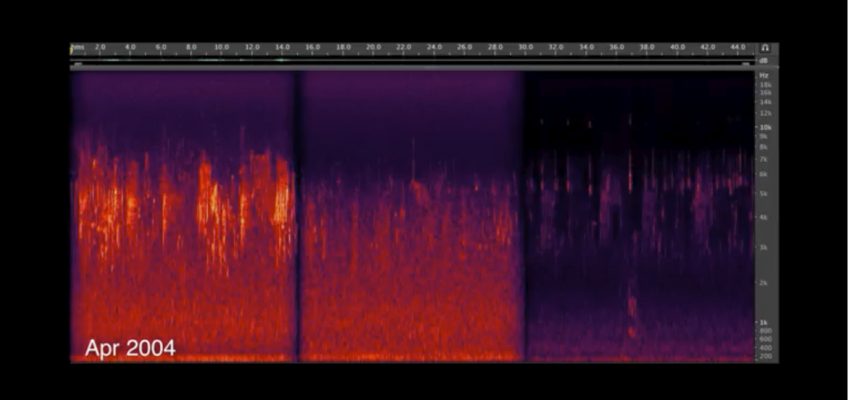
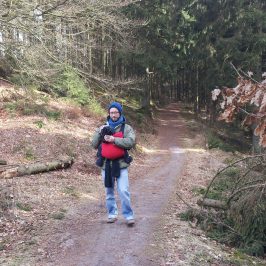
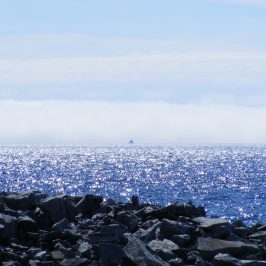

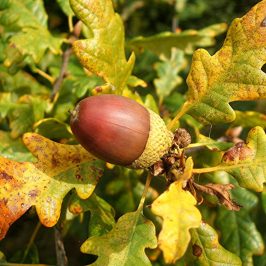
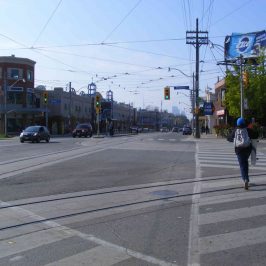
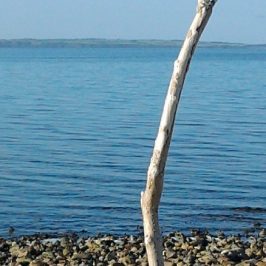
Leave a Reply